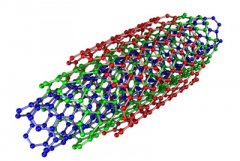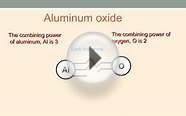Aluminum oxide Coatings
A new study from North Carolina State University and the National Institute of Environmental Health Sciences (NIEHS) finds that coating multiwalled carbon nanotubes (CNTs) with aluminum oxide reduces the risk of lung scarring, or pulmonary fibrosis, in mice.
“This could be an important finding in the larger field of work that aims to predict and prevent future diseases associated with engineered nanomaterials, ” says James Bonner, a professor of environmental and molecular toxicology at NC State and senior author of a paper describing the work. “Our goal is to find ways to make sure that carbon nanotubes don’t become the next asbestos.”

Multiwalled CNTs have a wide array of applications, ranging from sporting goods to electronic devices. And while these materials have not been associated with adverse health effects in humans, research has found that multi-walled CNTs can cause pulmonary fibrosis and lung inflammation in animal models.
“Because multiwalled CNTs are increasingly used in a wide variety of products, it seems likely that humans will be exposed to them at some point, ” Bonner says. “That means it’s important for us to understand these materials and the potential risk they pose to human health. The more we know, the better we’ll be able to engineer safer materials.”
For this study, the researchers used atomic layer deposition to coat multiwalled CNTs with a thin film of aluminum oxide and exposed mice to a single dose of the CNTs, via inhalation.
The researchers found that CNTs coated with aluminum oxide were significantly less likely to cause pulmonary fibrosis in mice. However, the coating of aluminum oxide did not prevent lung inflammation.
“The aluminum oxide coating doesn’t eliminate health risks related to multi-walled CNTs, ” Bonner says, “but it does lower them.”
The paper, “Atomic Layer Deposition Coating of Carbon Nanotubes with Aluminum Oxide Alters Pro-Fibrogenic Cytokine Expression by Human Mononuclear Phagocytes In Vitro and Reduces Lung Fibrosis in Mice In Vivo, ” is open access and was published in the journal PLOS ONE. Lead author of the paper is Alexia J. Taylor of NC State. Co-authors are Kelly A. Shipkowski, Elizabeth A. Thompson, Christina D. McClure, and Gregory N. Parsons of NC State; and Salik Hussain and Stavros Garantziotis of NIEHS.
You might also like





|
Non-electrolytic aluminum oxide conversion coating: a non-electrolytic method can be used to produce a thin aluminum oxide coating of the same or ... ...: An article from: Products Finishing Book (Gardner Publications, Inc.) |





